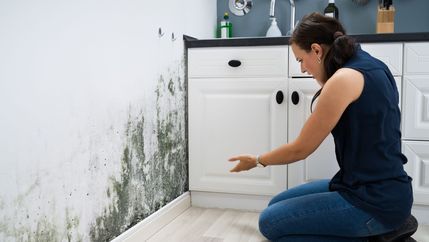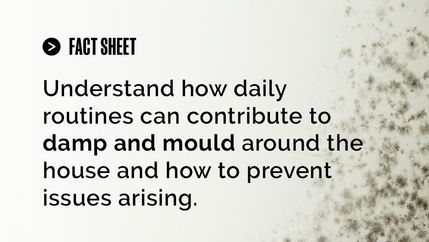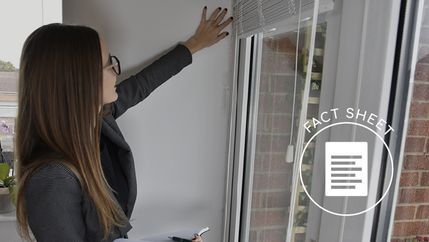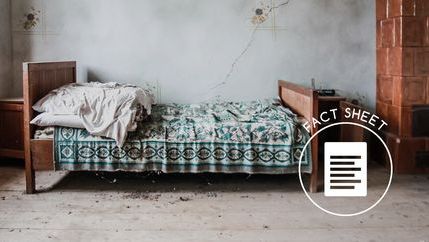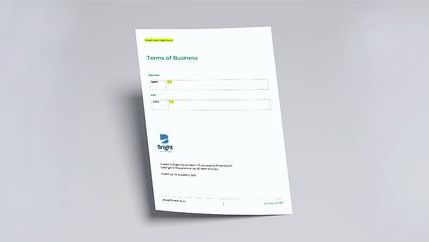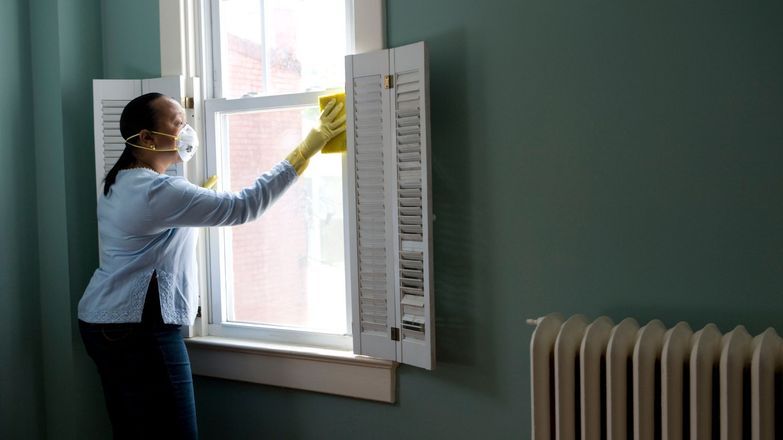
Renters’ Rights legislation will apply the Decent Homes Standard (DHS) to the PRS and extend Awaab’s Law‑style timeframes to private landlords (with detailed PRS time limits to be set via regulations after consultation).
By creating a timed, risk‑led, and documented workflow which meets Awaab’s Law today, agencies can get ahead of the legislation and ensure they have the evidence needed if complaints escalate.
View guidance for social landlords on GOV.UK →
More serious health impacts for vulnerable tenants
Mould spores and damp environments can produce allergens and irritants that affect everyone, but they pose particular dangers to people with asthma, respiratory conditions, or weakened immune systems. Prolonged exposure can lead to coughing, wheezing, eye irritation, eczema, and in severe cases, respiratory infections.
Agents should encourage tenants to report any issues early and ensure swift investigation and remediation. Delays can allow mould to spread rapidly, increasing both health risks and the cost of repairs.
At‑a‑glance: the Awaab’s Law stopwatch
- Day 0 (awareness): The clock starts when the agent becomes aware of a potential hazard (e.g., tenant report, third‑party notification).
- Within 10 working days: Investigate potential significant hazards (can be remote or in‑person; tenants may request an in‑person “renewed” investigation, which resets timeframes).
- Within 3 working days of concluding the investigation: Issue a written summary of findings and next steps.
- Within 5 working days of the investigation: Complete relevant safety works and begin supplementary prevention works; if not possible, start physically within 12 weeks, having taken steps within 5 working days to secure a start.
- Emergency route: Investigate and make safe within 24 hours; if you can’t make safe in time, secure suitable alternative accommodation at the landlord’s expense until works are done.
Treat reports with urgency; remove surface mould promptly and tackle the underlying building cause (ventilation, insulation, leaks). Do not delay waiting for medical evidence. Avoid referring to “lifestyle”. Everyday activities (cooking, bathing, laundry) are not a reason to delay or deny action.
“Becoming aware” includes direct tenant reports, third‑party notifications (e.g., local authority, Ombudsman) and material changes to an issue that the agent already knows about. Risk alerts from environmental monitoring systems (e.g., humidity sensors) don’t, by themselves, start the legal clock, but they should trigger proactive checks.
“£3,500 we didn’t need to spend”
In one case reported by a letting agent, a mis‑vented tumble dryer and clothes drying on radiators led to widespread black mould and resulted in £3,500 of treatment and redecoration.
Running a stopwatch workflow—log Day 0, inspect within days, send a written plan, complete a mould-safe clean and ventilation changes fast, then fix the dryer vent and extraction within the quarter—could have contained it to a short visit and a few targeted works, saving thousands and preventing a repeat.
The legal position across the four nations
Although current legislation differs across the UK, all agents managing residential property should consider adopting the principles of Awaab’s Law as best practice for the sector.
England: The expansion of the Decent Homes Standard and Awaab’s Law to the PRS is expected by 2035.
England and Wales: Fitness for Human Habitation (FFHH) duties apply across tenures; damp & mould is one of the 29 matters and landlords must act to keep homes FFHH.
Scotland: Ministers have confirmed intent to introduce Awaab’s Law‑style powers via the Housing (Scotland) Bill.
Northern Ireland: No Awaab’s Law equivalent yet; fitness standards and NIHE guidance apply.
Fact sheet: Damp, condensation and mould in residential property
Tenants, letting agents and landlords all need to contribute to preventative measures to reduce the impact on living conditions and properties. Taking reasonable steps to tackle damp and mould is not only about looking after your health, it is your responsibility as a tenant.
Fact sheet: Fitness of Homes for Human Habitation in Wales (Inventory clerks)
Renting Homes (Wales) Act 2016 received Royal Assent on 18 January 2016 which provides additional obligations for landlords and letting agents around the condition of their properties. The Act comes into force from 1 December 2022.
Fact sheet: Homes (Fitness For Human Habitation) Act 2018
This Act replaces Section 8 of the Landlord and Tenant Act 1985 (LTA 1985) in England, with the purpose of improving living standards in the private and social rented sectors.

